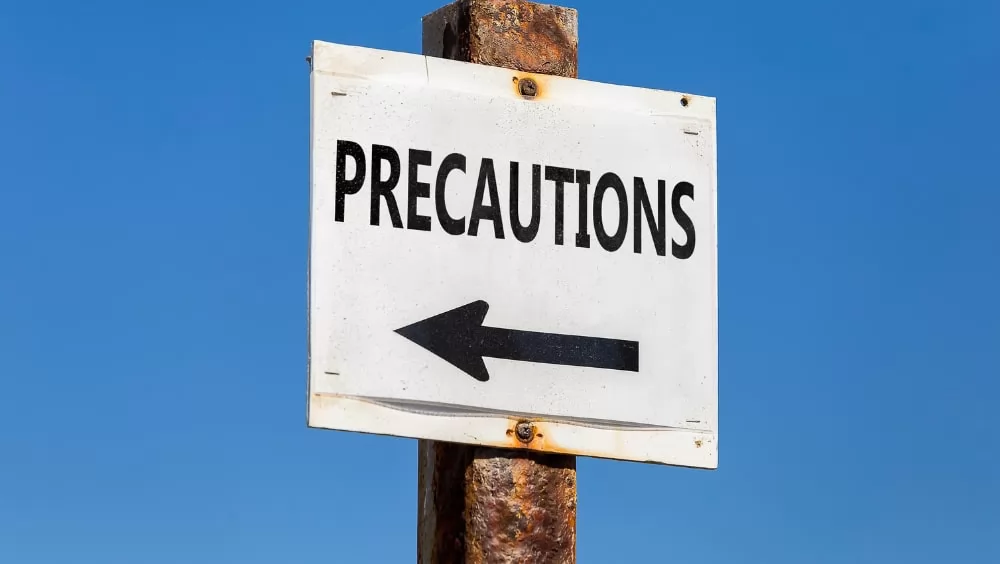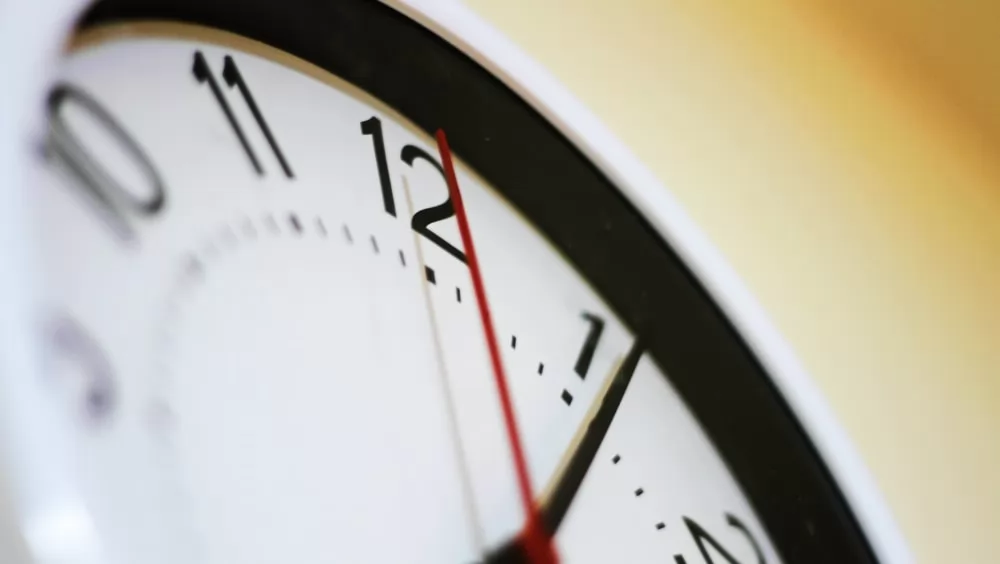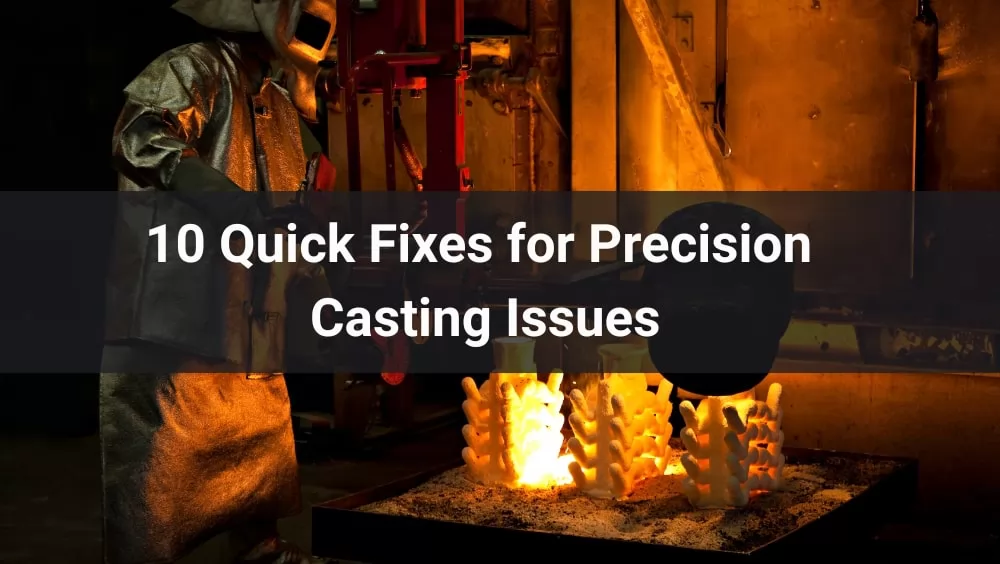Precision casting is a sophisticated manufacturing process widely used for producing detailed metal components. However, even minor defects can disrupt production timelines, increase costs, and reduce product quality. Quickly identifying and addressing these issues is essential to keep projects on track and maintain high standards.
In this article, we explore ten common precision casting problems along with practical fixes you can implement immediately. Whether you're a foundry engineer or a project manager, these quick solutions will help you troubleshoot and improve your casting outcomes efficiently.
List of 10 Quick Fixes for Investment Casting Problems
| Defect | Description |
|---|---|
| Wax Pattern Imperfections | Surface flaws or warping in wax models. |
| Cracked Ceramic Shells | Shell cracks from drying or thermal shock. |
| Gas Porosity | Trapped gas bubbles weaken casting. |
| Incomplete Filling | Mold not fully filled, missing details. |
| Shell Breakage | Shell collapses before pouring. |
| Metal Inclusions | Foreign particles in casting. |
| Shrinkage Defects | Voids from metal contraction. |
| Surface Roughness | Uneven surface texture. |
| Misruns & Cold Shuts | Incomplete metal fusion. |
| Alloy Segregation | Uneven alloy distribution. |
1. Wax Pattern Imperfections
Common Problems: Surface blemishes, warping, or inconsistent wax model thickness.
Wax patterns are the foundation of investment casting. Issues here often translate directly into casting defects. Warped or uneven wax can cause problems in the ceramic shell stage.
Quick Fix: Adjust injection pressure during wax molding and ensure the mold temperature is optimal to reduce distortion. Regularly inspect the wax mold for damage or wear.
2. Cracked Ceramic Shells
During the drying or dewaxing process, ceramic shells may crack, compromising mold integrity.
Cause: Too rapid drying, inadequate shell thickness, or thermal shock during dewaxing.
How to Fix: Extend drying times and ensure even temperature control. Increasing shell thickness slightly can also add durability. Avoid rapid temperature changes during dewaxing.
3. Gas Porosity
What Happens: Small gas bubbles get trapped in the casting, weakening the metal.
Gas porosity is usually caused by moisture in the ceramic shell or insufficient venting.
Solution: Improve mold venting, preheat molds to remove moisture, and maintain the melt temperature within the recommended range to reduce gas entrapment.
4. Incomplete Filling
Issue: Part of the mold cavity is left unfilled, leading to missing features.
Commonly caused by low pouring temperature or poorly designed gating systems.
Tip: Increase the metal pouring temperature to improve flow. Modify the gating system by adding risers or enlarging gates to allow smoother filling.
5. Shell Breakage During Firing
If the ceramic shell collapses before metal pouring, the mold becomes unusable.
Reason: Incorrect burnout schedules or excessive thermal shock during firing.
Fix: Optimize the burnout process with gradual heating. Use controlled ramp-up rates to minimize stress on the shell.
6. Metal Inclusions
Foreign particles or debris embedded in the casting reduce its quality and strength.
Common Sources: Contaminated melting equipment or dirty molds.
Preventive Measure: Use clean ceramic molds and filter the molten metal before pouring. Maintain melting equipment regularly to avoid contamination.
7. Shrinkage Defects
Shrinkage causes voids or sink marks as the metal contracts during solidification.
How to Address: Incorporate feeders or risers in the mold design to supply extra molten metal during cooling. Adjust alloy composition for better flow and shrinkage control.
8. Surface Roughness
Rough, uneven surfaces reduce part quality and may require costly finishing.
Root Causes: Poor wax finish, coarse ceramic slurry, or improper burnout temperature.
Quick Solution: Improve the wax model surface quality, use finer ceramic coatings, and control the burnout temperature to achieve smoother surfaces.
9. Misruns and Cold Shuts
These defects occur when molten metal fronts fail to fuse properly, resulting in weak joints or incomplete sections.
Typical Fix: Raise the pouring temperature and optimize the gating design to prevent turbulence and ensure continuous flow.
10. Alloy Segregation
Uneven distribution of alloy components affects mechanical properties and performance.
How to Fix: Thoroughly stir the molten alloy before pouring. Control the solidification rate by adjusting mold temperature or cooling methods.
Things to Note When Repairing Precision Castings

Repairing precision castings requires careful attention to maintain the integrity and performance of the part. Here are key points to consider:
1. Assess the Damage Thoroughly
Before starting repairs, inspect the casting carefully to determine the extent and type of damage—whether it’s cracks, porosity, or surface defects.
2. Choose Appropriate Repair Methods
Common repair techniques include welding, brazing, or metal stitching. The method should suit the material and the function of the part to avoid weakening it.
3. Maintain Material Compatibility
Use filler materials and repair processes that are compatible with the original casting to prevent issues like corrosion or thermal mismatch.
4. Control Heat Input
Excessive heat during repair can cause distortion or alter the mechanical properties. Use controlled heating techniques and post-repair heat treatment if necessary.
5. Follow Quality Standards
Ensure repairs meet industry standards and certifications, especially for critical applications in aerospace, medical, or automotive sectors.
6. Perform Post-Repair Testing
Non-destructive testing such as X-ray or ultrasonic inspection helps verify the repair quality and detect hidden flaws.
7. Consider Replacement vs. Repair
In some cases, replacing the casting may be more cost-effective or safer than repairing, particularly for complex or heavily damaged parts.
When to Stop Fixing and Start Redesigning

Recurring defects in precision casting often indicate fundamental issues that simple fixes can’t fully address. If you find yourself repeatedly troubleshooting the same problems without lasting success, it’s a clear sign to consider a deeper evaluation of the part and process design.
Simplify Part or Mold Geometry
Complex shapes can increase stress points, cause uneven metal flow, or lead to hard-to-predict solidification patterns. Redesigning to simplify the geometry can improve metal flow and reduce defect formation. For example, avoid sharp corners, abrupt thickness changes, or inaccessible areas that are difficult to fill or cool evenly.
Use Simulation and Modeling Tools
Advanced casting simulation software can predict how molten metal will flow, cool, and solidify inside the mold. Running these simulations helps identify hotspots, air traps, or weak points before production, enabling proactive design adjustments that reduce defects.
Collaborate with Experts
Complex casting challenges benefit from the insight of experienced foundry engineers or metallurgists. They can provide tailored advice, recommend process changes, or validate new designs. Early collaboration can prevent costly trial-and-error during production.
Evaluate Material and Process Compatibility
Sometimes the choice of alloy or casting method may not suit the design requirements. A redesign might involve changing the material, altering wall thicknesses, or switching to a more suitable casting technique.
Assess Cost vs. Benefit
Persistent defects not only affect quality but increase scrap rates, rework, and production delays. When fixes consume more resources than redesign, investing in redesign is often more cost-effective long-term.
In essence, recognizing the limits of “fixing” is key. When defects remain despite multiple interventions, redesigning your part or process with a fresh perspective and technical tools will usually provide a more robust, efficient, and cost-effective solution.
Troubleshooting Summary Table
| Defect Type | Likely Cause | Quick Fix Tip |
|---|---|---|
| Gas Porosity | Moisture, poor venting | Preheat molds, improve venting |
| Incomplete Filling | Cold metal, poor flow | Increase pouring temperature, add gates |
| Shrinkage | Poor feeding | Add risers/feeders, adjust alloy |
FAQs: Fixing Precision Casting Defects

What’s the fastest way to identify the root cause of a defect?
Start with visual inspection, then check process parameters like temperature, venting, and mold integrity.
Can multiple defects occur simultaneously?
Yes, defects often overlap. Addressing primary issues like mold quality and pouring conditions usually resolves multiple problems.
How do I know if a fix worked?
Monitor subsequent castings for defect reduction. Use inspection techniques like X-ray or dye penetrant testing for confirmation.
Conclusion: From Troubleshooting to Excellence
Precision casting is an art and science requiring careful control over many variables. While quick fixes can resolve many common issues, the ultimate goal is prevention through design optimization and process control. Investing in quality at every stage saves time and cost downstream.
If you encounter persistent casting problems, consider partnering with experienced foundries or consulting engineers who specialize in precision casting. Besser is a trusted name in the industry, known for delivering high-precision, defect-free castings with a strong focus on quality control and customer-specific solutions. Their technical expertise and commitment to excellence make them a reliable partner for complex projects across various industries.




